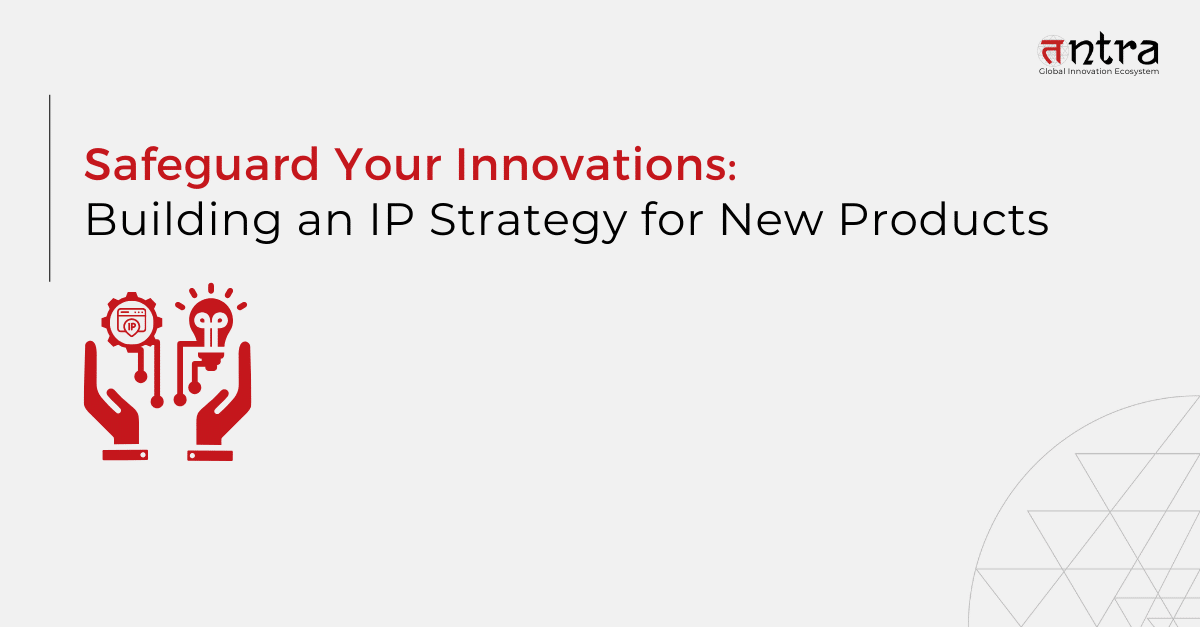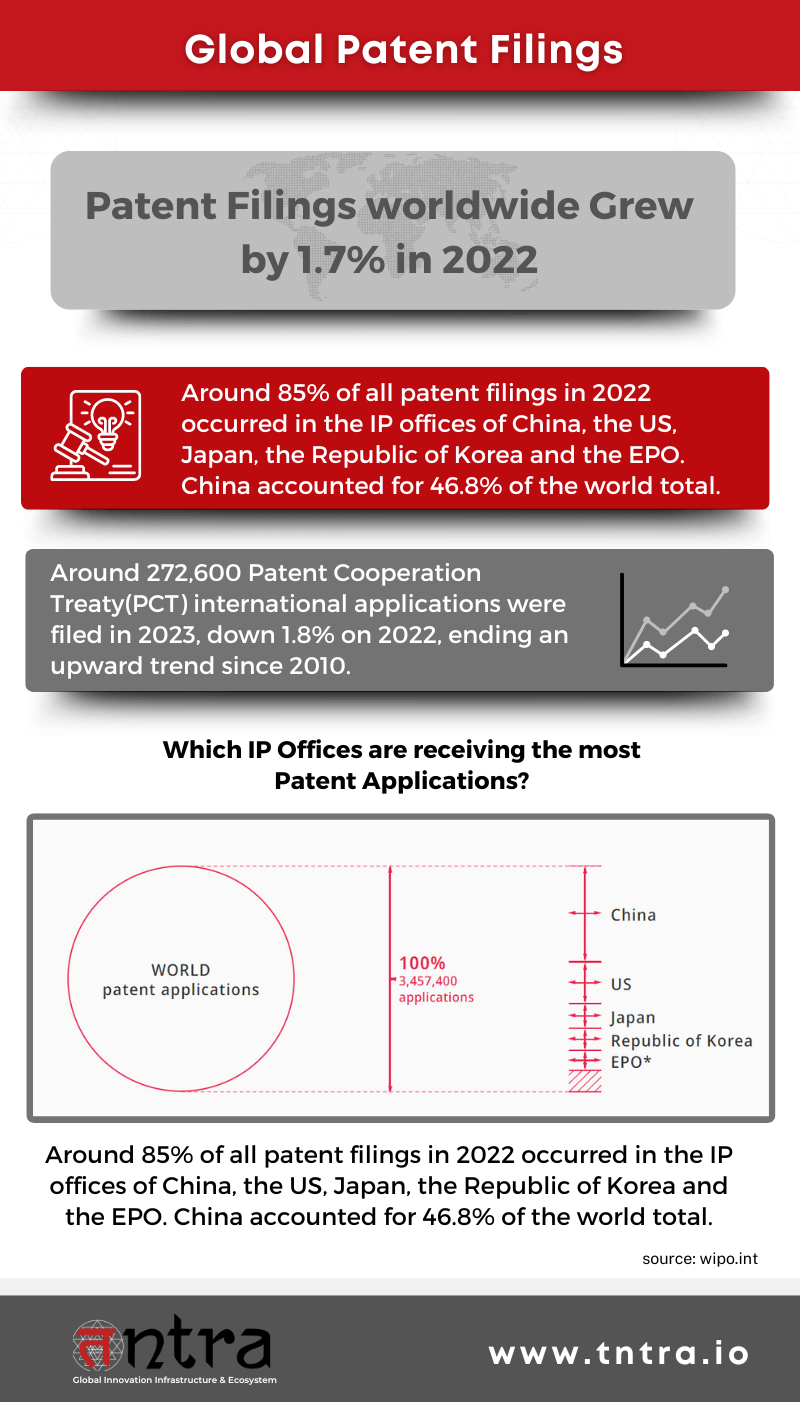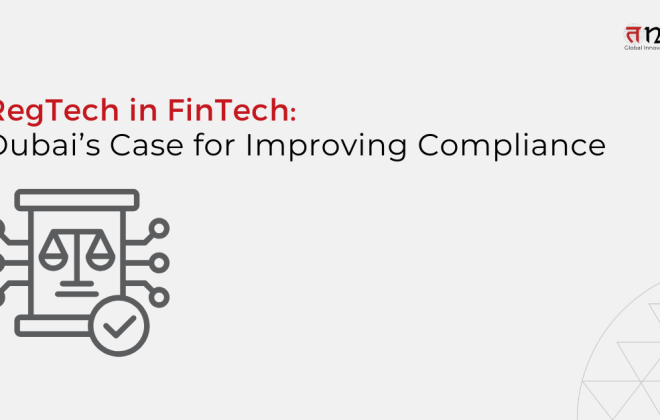
Safeguard Your Innovations: Building an IP Strategy for New Products
Table of Contents
ToggleAn intellectual property strategy maximises the impact of new product development while reducing risks. Choosing the appropriate kind of intellectual property (IP) protection (patents, trademarks, copyrights, trade secrets) and creating an enforcement strategy are important factors to take into account. The three primary approaches to IP strategy include: collaborative (sharing IP resources), offensive (monetizing your IP), and defensive (protecting your IP). Lastly, it is highly crucial to handle intellectual property well throughout the entire process of developing a new product. Businesses can obtain a competitive advantage and guarantee the success of their new inventions by effectively utilising the IP system. Continue reading to learn more.
Cisco has an excellent IP strategy and patent portfolio as of the end of 2023, with 12,118 patent families worldwide. Among these are some of the most well-known inventions made by Cisco; 2,746 of the 9,372 patent families are no longer in use. This illustrates Cisco’s standing as a major force in the tech sector and shows its global reach and influence. Cisco is well-represented on the list of Cisco countries as of 2023.
The variety of Cisco patents spans a number of IPC classes, including programmes or data against illegal activity (G06F21) and data switching networks (H04L12). According to Cisco statistics, the corporation not only prioritises meeting present-day technology demands but also lays the groundwork for future developments.
With respect to competitors, partners, and the entire technological landscape, its extensive portfolio of software patents acts as a strategic roadmap for the networking sector.
The company’s emphasis on cutting-edge fields including data switching networks, secure communications, and digital computing highlights its strategic vision, despite a varying success rate in patent filings throughout the years. The high citation frequency of Cisco’s top intellectual property in business shows that the company has a big influence on future trends and technological breakthroughs. In addition to showcasing Cisco’s past accomplishments, this landscape also suggests the company’s future course in influencing the technology ecosystem.
(Source: TT Consultants, GreyB)
The Intellectual Property Landscape in Technology
In 2022, “software-related” U.S. utility patents accounted for 63.5% of all issued patents(almost unchanged from 63.1% in 2021). “Software-related” patents accounted for 49.6% of all awarded EPO patents (almost unchanged from 49.4% in 2021). “Software-related” patents made for 43.5% of all awarded Chinese patents (up 8% from 40.2% in 2021).
Over 80% of patents in the manufacturing business were awarded to high- and medium-high technology manufacturing industries. With a total of 70,015 international (PCT) patent applications in 2022, China again took the lead, followed by the US and Japan.

How Does Intellectual Property Support Product Development?
Product development and innovation are essential components of a successful business. Maintaining a competitive advantage is essential for organisations and calls for consistent investment. Product creation alone, however, is insufficient; companies also need to use intellectual property (IP) strategies for startups to safeguard their innovations.
Using intellectual property (IP) wisely and developing an IP strategy for new products lowers risk and helps new product launches tremendously. Intellectual Property System considerations come up frequently during the development process, and it’s critical to take them into account from the outset all the way through to launch.
A strong IP strategy is essential to the development of new products. This plan should take into account the following and be in line with your company’s objectives:
- IP Identification: Determine whether features of your product fall under the purview of IP protection.
- IP Protection: Choose which types of IP protection are best for the various parts of your product.
- IP Enforcement: Provide procedures for resolving infringements of your intellectual property.
Here are a few strategies to consider for integrating intellectual property in the product development process:
- Consider the type of IP
The first thing to think about is what kind of intellectual property best fits your new product. Intellectual property comes in four primary forms: patent ownership, trademarks, copyrights, and trade secrets. Every kind has unique traits, benefits, and drawbacks. Patents, for instance, can shield your product’s technical characteristics and capabilities, but they need to be disclosed, registered, and maintained. - Create an IP strategy
The plan that directs your intellectual property choices is the second thing to think about. IP innovation strategies can be broadly classified into three categories: cooperative, offensive, and defensive. The goal of defensive intellectual property methods is to stop others from stealing, violating, or contesting your innovative product. They entail preventing or lessening IP conflicts in addition to protecting and upholding your intellectual property rights in the product development lifecycle stages. The goal of offensive IP tactics is to make money off of your innovative products. They include pursuing or starting IP disputes, as well as licensing, selling, or otherwise using your intellectual property rights. The goal of collaborative IP strategies is to access and exchange IP resources for one another’s advantage. They involve settling or averting IP disputes as well as collaborating, trading, or pooling IP rights. - Manage IP portfolio
The third thing to think about is how you handle your intellectual property (IP) assets during the product development cycle. This entails recognising, seizing, defending, and upholding your intellectual property rights in addition to tracking, assessing, and auditing your IP performance. A methodical and proactive approach to IP management is necessary, one that is in line with the objectives of your product, the demands of the market, and the law. A committed and knowledgeable staff that can manage the technical, legal, and commercial facets of IP is also necessary. You can optimise your IP portfolio, lower your IP expenses, and raise the value of your IP with the use of IP management.
Final Thoughts
The majority of technological innovations are enhancements that somehow elevate an existing product beyond its predecessor; very few are completely new goods. A company can enter the market unopposed by rivals through complete product development lifecycle management. An organisation can acquire and hold onto this advantage with the aid of the IP system. A business that innovates significantly is likely to achieve a longer-lasting competitive advantage than one that makes minor improvements. If there is an improvement, competitors for that product class already exist, and the improvement is also much more rapidly recognised and copied.
If you are looking for a partner to build innovative software and navigate the complex IP landscape, the Tntra is the right choice for you. We are an IP-led software product engineering company that has helped companies in over 10 countries build innovative software products.
Contact us today for a FREE CONSULTATION!





